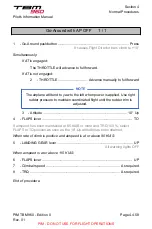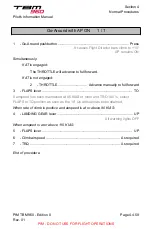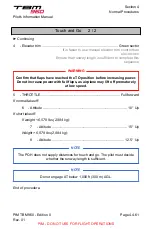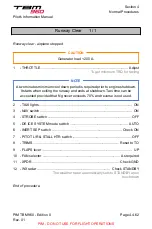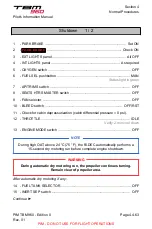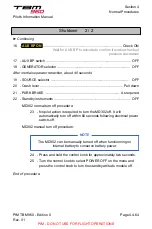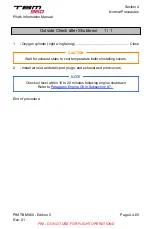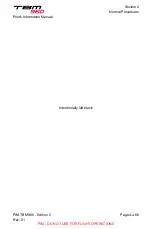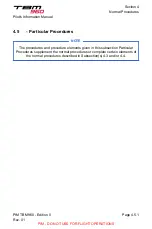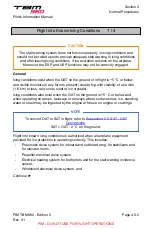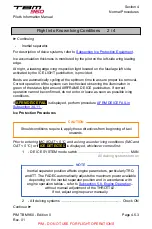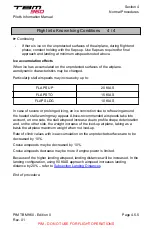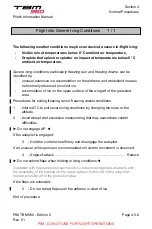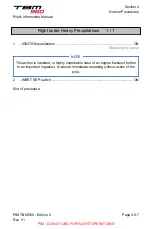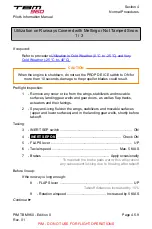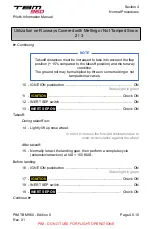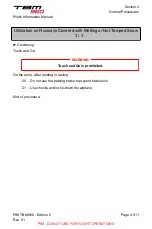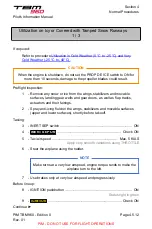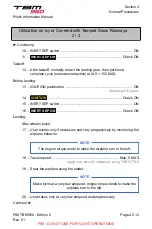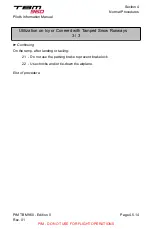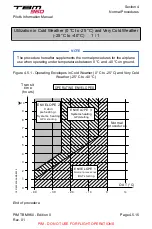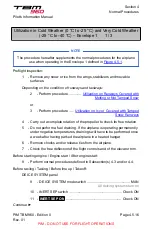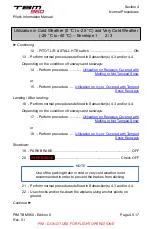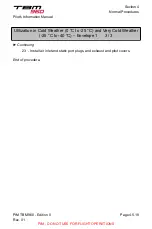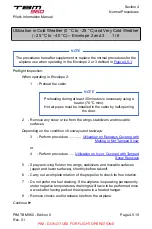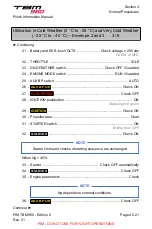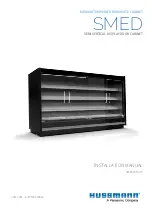
Flight into Severe Icing Conditions 1 / 1
The following weather conditions may be conducive to severe in-flight icing:
-
Visible rain at temperatures below 0 °C ambient air temperature,
-
Droplets that splash or splatter on impact at temperatures below 0 °C
ambient air temperature.
Severe icing conditions, particularly freezing rain and freezing drizzle, can be
identified by:
-
unusual extensive ice accumulation on the airframe and windshield in areas
not normally observed to collect ice,
-
accumulation of ice on the upper surface of the wing aft of the protected
area.
Procedures for exiting freezing rain or freezing drizzle conditions:
1
- Inform ATC to exit severe icing conditions by changing the route or the
altitude.
2
- Avoid abrupt and excessive maneuvering that may exacerbate control
difficulties.
► Do not engage AP ◄
If the autopilot is engaged:
3
- Hold the control wheel firmly and disengage the autopilot.
If an unusual roll response or uncommanded roll control movement is observed:
4
- Angle-of-attack .......................................................................... Reduce
► Do not extend flaps when holding in icing conditions ◄
Operation with flaps extended can result in a reduced wing angle-of-attack, with
the possibility of ice forming on the upper surface further aft on the wing than
normal, possibly aft of the protected area.
If the flaps are extended:
5
- Do not retract flaps until the airframe is clear of ice.
End of procedure.
Pilot's Information Manual
Section 4
Normal Procedures
PIM TBM 960 - Edition 0
Rev. 01
Page 4.5.6
PIM - DO NOT USE FOR FLIGHT OPERATIONS

